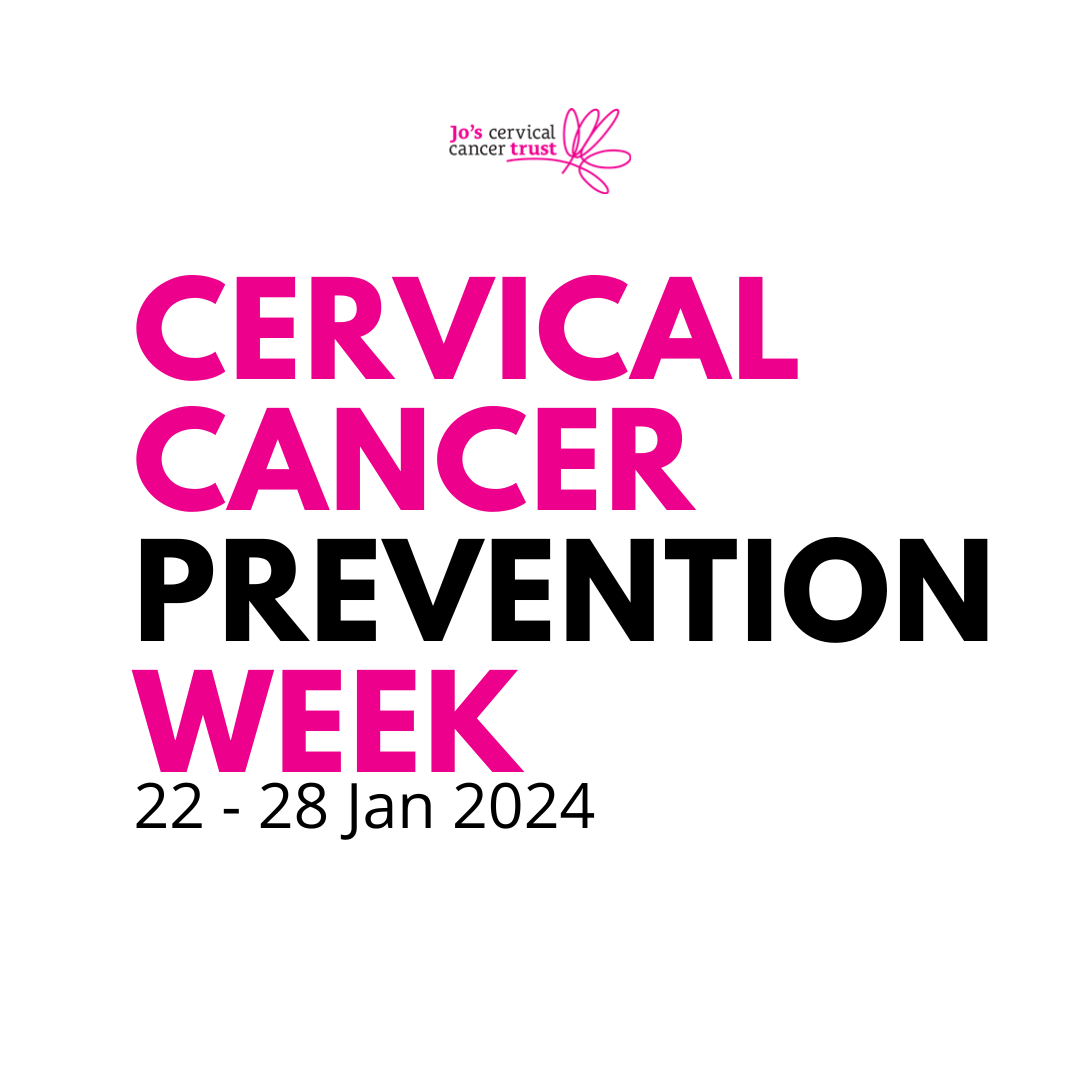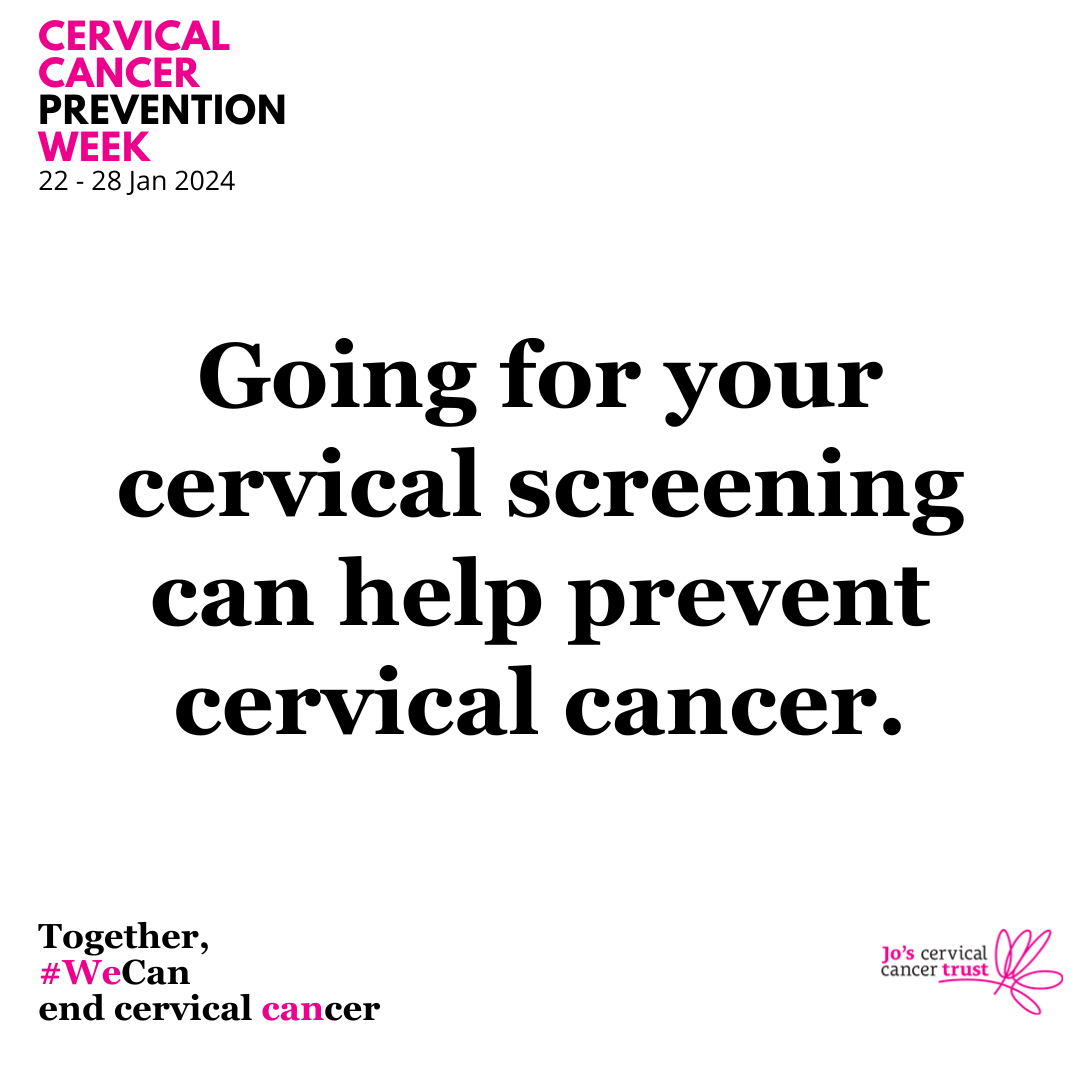Help us end Cervical Cancer
Every day in the UK, 2 women lose their lives to cervical cancer and 9 more receive a life-changing diagnosis.
But nearly every case of cervical cancer – 99.8%, in fact – could be prevented.
Today marks the beginning of Cervical Cancer Prevention Week, and we are joining Jo’s Cervical Cancer Trust to share the message that we can make Cervical Cancer a thing of the past.
Read on for the full picture of cervical cancer, what causes it and how it can be prevented. Or you can jump straight to different sections using the buttons below.
What is Cervical Cancer?
The cervix is part of the female reproductive system, and if abnormal cells grow uncontrollably in the cervical lining, they can eventually form a tumour.
If this isn’t spotted and treated early, the growth can continue to spread and even move into other parts of the body.
There are around 3,200 new cases of cervical cancer diagnosed in the UK every year, leading to over 800 deaths.
Symptoms can include:
- Unusual vaginal bleeding
- pain or discomfort during sex
- Vaginal discharge
- Pain in and around your pelvis
If you get any of these symptoms, arrange to see your GP as soon as possible. Cancer Research UK has helpful advice on getting the most out of your appointment, including keeping a symptom diary.
Not everyone will develop all these symptoms – or any at all – which is why early detection is so important.



Causes and Risks
Almost all types of cervical cancer are caused by the human papillomavirus or HPV.
There are lots of different types of HPV, and it is very common. It passes through skin-to-skin contact, usually during sexual activity between people of any gender. Most sexually active people will encounter HPV at some point in their lives, and often it is harmless.
However, some types cause genital warts, and fourteen high-risk types can cause cervical cancer.
Most new diagnoses of cervical cancer are in women aged 30-34.
Risk is much lower before the age of 25 or after the age of 64. If you have never been sexually active, your risk may be lower, but that doesn’t mean there is no risk at all.
Smoking cigarettes and not practising safe sex (not using condoms) will increase your risk of getting HPV. One in 6 cases of cervical cancer is also linked to deprivation.
HPV Vaccination
All children are offered the HPV vaccination at school between the ages of 11-13.
The jab will protect against 90% of cancer-causing types of HPV.
If you missed getting vaccinated against HPV at school, you may be able to get it for free through your GP practice up until you turn 25.
Jo’s Cervical Cancer Trust have an HPV vaccine fact sheet with additional information about vaccine safety, parental consent, and nervousness about injections.
Cervical Screening
Cervical screening (a smear test) is a test to check the health of the cervix. It’s not a test for cancer. It’s a test to prevent cancer.
A small cell sample is taken and tested for the presence of HPV – the virus that can cause cervical cancer.
If high-risk HPV is found, then the affected cells can be treated before they are able to develop into cancer.
Screening invitations are sent to every woman or person with a cervix before their 25th birthday and continue regularly to age 64.
Appointments are held at GP practices with a nurse or doctor and typically take only a few minutes.
Increasing the number of people who get screened is key to the NHS pledge to eliminate cervical cancer by 2040.
In 2022, our Primary Care Networks in Jesmond and Gosforth carried out a project to understand what people thought about cervical screening.
More than 600 women shared their views, telling us that:
- Embarrassment, anxiety, and worry about the procedure being painful were some of the top reasons for not attending screenings.
- You wanted more and better information about the changes to testing for HPV and for people who do not have sex with men.
- The number of people who die of cervical cancer – around 850 in the UK yearly – was higher than you expected.
- More than half of the respondents were surprised to learn that nearly all cases of cervical cancer – 99.8% – were preventable and that this should be the central message of future communications.
- You wanted future campaigns about cervical cancer to be factual and statistically driven, augmented with first-hand stories from nurses and patients.
Based on what you told us, we created this video. It covers the science and the statistics, what happens at your appointment, and first-hand perspectives.
You can watch the full video below or visit our YouTube channel for playlists of bite-size clips.
Support
Jo’s Cervical Cancer Trust offer a wide range of support services for people diagnosed with cervical cancer and their families.
They include a telephone helpline (Call 0808 802 8000), online support forums, a 1:1 support service, support events and more.
Visit jostrust.org.uk/get-support to explore what is available.
Closer to home, support is also available through our Social Prescribing Link Workers (SPLWs) in Gosforth and Jesmond. You can read about how SPLWs are helping people after their diagnoses in our article from November.
